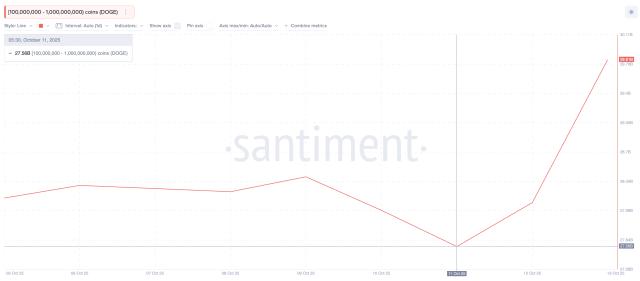Source: Nasdaq; Compiled by: Jinse Finance
On September 8, 2025, Nasdaq announced that it had submitted a document to the U.S. Securities and Exchange Commission (SEC) to facilitate the trading of tokenized securities on the Nasdaq stock market. Meanwhile, Chuck Mack, Nasdaq's Senior Vice President of North American Markets, joined Nasdaq Newsroom to discuss and interpret this new proposal. Let's take a look at Nasdaq's thinking.
Nasdaq Newsroom: Simply put, what is the purpose of Nasdaq submitting this new document to the US SEC?
Chuck Mack: Nasdaq's proposed rule changes will allow member firms and investors to trade tokenized equity securities and exchange-traded products (ETPs) on the Nasdaq market. The goal is to integrate digital assets into Nasdaq's existing infrastructure and systems, which will promote financial innovation while maintaining stability, fairness, and investor protection.
Specifically, the proposal provides a simple and clear approach to enabling the trading of tokenized securities within the existing regulatory framework, using the Depository Trust Company (DTC) to clear and settle transactions in token form.
Here’s how it works: Securities can be traded on Nasdaq in either traditional or tokenized form.
- Traditional forms are digital representations of ownership and rights, but do not utilize distributed ledger or blockchain technology
- Tokenization is a digital representation of ownership and rights, using distributed ledger or blockchain technology
After an order is entered, participants can choose to clear and settle in either conventional or tokenized form, with the exchange transmitting the participant's instructions to the Depository Trust Company (DTC). All shares will trade on Nasdaq, subject to the same order entry and execution rules, have the same identification code (CUSIP) as traditional stocks, and grant their holders the same rights and benefits as traditional stocks.
Nasdaq Newsroom: What exactly are tokenized securities?
Chuck Mack: There are two components here: the token and the security.
In this context, a token is a digital representation of any asset created and recorded on a blockchain—the data storage method pioneered by Bitcoin. A token can include a currency like Bitcoin, a dollar-pegged token like the stablecoin Tether (USDT), or any other form of blockchain-based representation of ownership or rights.
Meanwhile, a security is a tradable financial asset that represents ownership or credit in a company—such as a share of stock or a bond.
Tokenized securities are therefore representations of these traditional financial instruments that have been recorded on a blockchain or other distributed ledger technology.
From our perspective, it is important to emphasize that while tokenized securities are technically different from those currently traded on the Nasdaq market, under our proposal they would still represent the same store of value as traditional securities.
After all, we already live in a digital world. Today, stocks and other securities are represented and recorded digitally, so tokenization is just another way to represent assets digitally.
Nasdaq Newsroom: What are the key details in the Nasdaq proposal that ordinary investors should understand?
Chuck Mack: Fundamentally, Nasdaq is proposing to leverage the existing infrastructure of the U.S. market to enable the trading of tokenized securities.
"There is significant global demand for Nasdaq-traded securities, and tokenization technology is generating significant interest. Our proposal enables market participants to access digital representations of these tokenized securities using a system they are familiar with and trust."
The proposed rule change would allow investors to choose whether they want to trade stocks or ETPs in tokenized or traditional digital form. If they choose the tokenized option, the DTC would handle the back-end work of clearing and settling the trade and record the asset as a blockchain-based token.
It is worth noting that the transaction will still be conducted under the existing federal regulations of the U.S. Securities and Exchange Commission to ensure fair and orderly trading.
This is a key point we made in our filing: Current U.S. rules do not preclude different types of securities representation. If you are trading a stock and we have DTC tokenize it after the trade, it makes no difference in terms of how the market works, how you trade, how you get best execution, or how you buy and sell on the exchange.
Importantly, traditional types of shares and tokenized shares have the same value, the same rights and benefits, and the same market identification number.
Nasdaq believes that security tokenization can and should not only be achieved within existing market frameworks and regulations. This proposal is an important way to introduce tokenization to the market: it will not only allow this new technology to develop and gain widespread acceptance, but also ensure that the investor protections we have established over decades are maintained.
Nasdaq Newsroom: Why did Nasdaq become interested in tokenized securities in the first place?
Chuck Mack: In some ways, this is about meeting demand: many market participants, including Nasdaq, believe that tokenization has the potential to benefit investors, issuers, and the broader economy.
Blockchain technology offers numerous potential efficiency gains, including faster settlement, improved audit trails, and more streamlined order, trade, and settlement processes. Furthermore, once equity assets are blockchain-enabled, they can potentially be used in entirely new ways.
All of this potential means there's a lot of excitement about this technology, and we know from the market that there's a significant demand for tokenized securities trading. We want to be part of the solution, helping the market evolve, continue to meet investor needs, and ensure it's effectively implemented.
Past market failures teach us that governance, resilience, and investor protection must be ensured from the outset.
Nasdaq is committed to being a trusted cornerstone of the global financial system. This means adapting to market changes and embracing new technologies with an investor-first approach to foster capital accumulation. Ultimately, it comes down to choice. If investors and market participants demand a particular approach, and we can implement it in a way that maintains market integrity, we want to give them that choice.
Nasdaq Newsroom: Why did Nasdaq propose this particular model to bring tokenized securities trading to market?
Chuck Mack : We want to make the trading process of tokenized securities simple and transparent for investors, while leveraging the strengths of the existing resilient and trusted equity trading ecosystem. The proposed rule changes are designed to foster innovation in existing market infrastructure and structures, creating new opportunities for investors while strengthening the standards for the proper functioning of U.S. markets. Specifically:
- Scale and Complexity: The U.S. stock market is the deepest and most liquid in the world, processing billions of transactions daily. Any new system must operate at this scale and be resilient, redundant, and fail-safe.
- Investor Protection: U.S. stock markets have safeguards and oversight measures in place to maintain the accountability and liability of companies involved in a transaction lifecycle, thereby ensuring shareholder rights, dividends, and proxy voting.
Our proposal also explicitly seeks to maintain the existing framework for tokenized securities trading, ensuring price discovery, information disclosure, and best execution. The goal is to ensure these principles remain relevant as the market evolves and modernizes.
Another motivation for improving the existing system is that Nasdaq wants to prevent the emergence of a fragmented market consisting of different versions of the same asset across multiple blockchains, which simultaneously offer trading in tokenized securities but don’t work well together—especially if the rules are inconsistent. If this happens, transparency could be reduced, liquidity could be fragmented, and prices could become chaotic.
Raising capital while protecting investors is essential to well-functioning markets, and well-functioning markets are essential to maintaining a prosperous economy – at Nasdaq, we've always emphasized that this comes down to liquidity, transparency, and integrity. We want to ensure these pillars are protected as our markets develop, and that's the purpose of our application.
Nasdaq Newsroom: Nasdaq recently announced changes to its listing standards, and subsequently, news reports emerged regarding corporate governance at crypto treasuries. How does this relate to today's announcement?
Chuck Mack : These are separate issues. First, we recently announced further enhancements to Nasdaq's listing standards to address key liquidity and trading challenges faced by companies in the current market environment. These enhancements primarily target certain micro-cap companies with limited liquidity.
Secondly, we are aware of recent media reports regarding crypto treasury companies. Nasdaq has not implemented any changes or new rules regarding these companies. As with any market development, Nasdaq consistently provides guidance to our listed companies on the application of existing listing rules, including shareholder approval rules applicable to any securities offering by a listed company.
Third, today’s announcement represents a separate filing with the U.S. SEC to facilitate the trading of tokenized securities on its marketplace.
While these issues vary, there is a common thread guiding Nasdaq's actions in the capital markets: achieving the goals of optimizing capital formation, protecting investors, and ensuring market integrity.
Nasdaq Newsroom: What’s next for tokenized securities?
Chuck Mack: Nasdaq's filing with the SEC will be open for public comment, and we look forward to hearing different perspectives. In fact, part of the reason we filed the filing is to facilitate discussion in a very transparent manner.
In parallel, Nasdaq’s team will work closely with clients and stakeholders to explain our thinking and gather feedback on how best to advance the industry.
Globally, it’s clear that the adoption of tokenization requires broad coordination across the industry. Market infrastructure providers, regulators, issuers, asset managers, and fintech companies all have important roles to play.
We welcome these discussions because they ultimately relate to Nasdaq’s core purpose of promoting economic progress for all.
Economic prosperity depends on innovation and participation, and these forces require market structures that reduce friction and align incentives. Our tokenization approach represents a step forward in the development of global financial markets.







